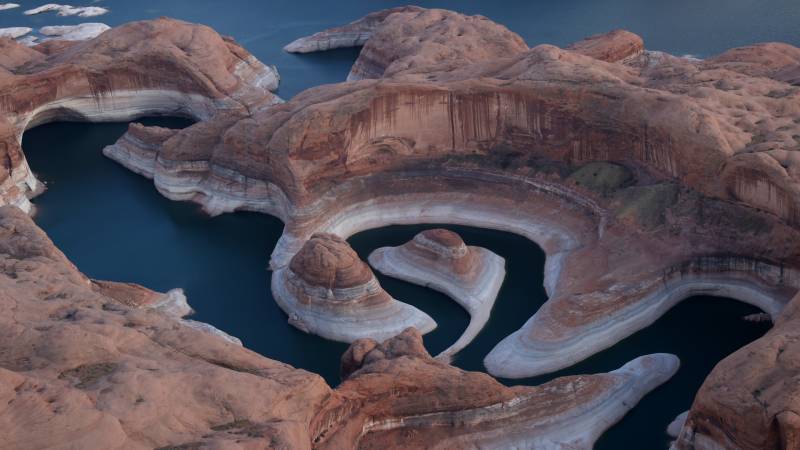Lake Powell, a 190-mile long reservoir in Utah that holds back the Colorado River, and which can hold 24 million acres of water, has dropped 140 feet since 2000 and 50 feet in the last year. But as the lake’s surface recedes, leaving a bathtub-like ring marking its evaporation, Glen Canyon, a natural wonder which was partially flooded by the dam, has reemerged. As Elizabeth Kolbert writes, in that canyon, we are seeing the Colorado River restore itself in real time. Well talk to Kolbert about what it’s like to celebrate “the effects of what, by most standards counts as a disaster” and the confounding feelings of finding silver linings in climate change.
How a Climate Disaster Is Also a Sign of Hope

The tall bleached "bathtub ring" is visible on the rocky banks of Lake Powell at Reflection Canyon on June 24, 2021 in Lake Powell, Utah. As severe drought grips parts of the Western United States, a below average flow of water is expected to flow through the Colorado River Basin into two of its biggest reservoirs, Lake Powell and Lake Mead. (Photo by Justin Sullivan/Getty Images)
Guests:
Elizabeth Kolbert, staff writer, The New Yorker. Her new book is "Under a White Sky: The Nature of the Future."
Sponsored